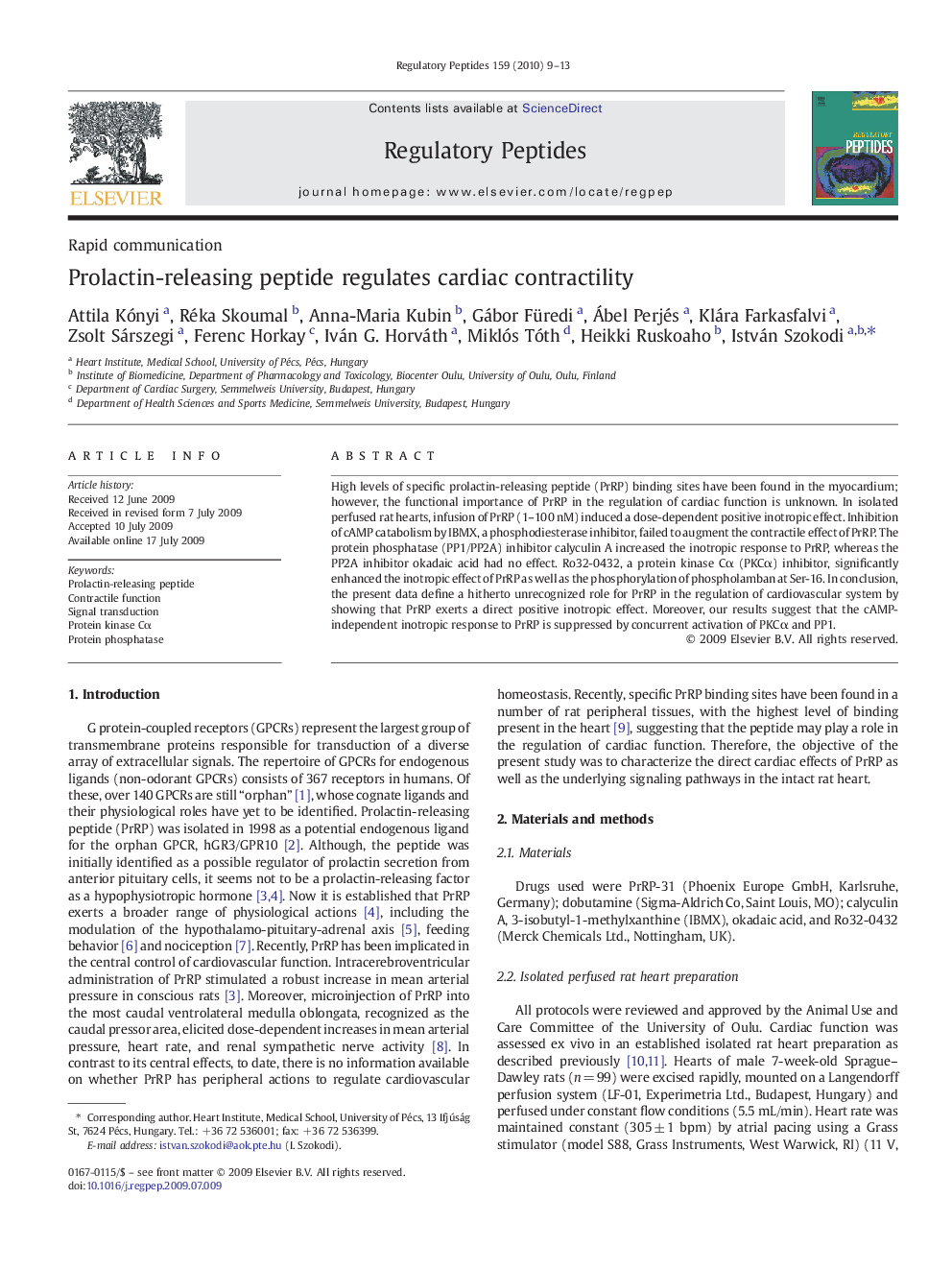| Article ID | Journal | Published Year | Pages | File Type |
|---|---|---|---|---|
| 2022967 | Regulatory Peptides | 2010 | 5 Pages |
High levels of specific prolactin-releasing peptide (PrRP) binding sites have been found in the myocardium; however, the functional importance of PrRP in the regulation of cardiac function is unknown. In isolated perfused rat hearts, infusion of PrRP (1–100 nM) induced a dose-dependent positive inotropic effect. Inhibition of cAMP catabolism by IBMX, a phosphodiesterase inhibitor, failed to augment the contractile effect of PrRP. The protein phosphatase (PP1/PP2A) inhibitor calyculin A increased the inotropic response to PrRP, whereas the PP2A inhibitor okadaic acid had no effect. Ro32-0432, a protein kinase Cα (PKCα) inhibitor, significantly enhanced the inotropic effect of PrRP as well as the phosphorylation of phospholamban at Ser-16. In conclusion, the present data define a hitherto unrecognized role for PrRP in the regulation of cardiovascular system by showing that PrRP exerts a direct positive inotropic effect. Moreover, our results suggest that the cAMP-independent inotropic response to PrRP is suppressed by concurrent activation of PKCα and PP1.
